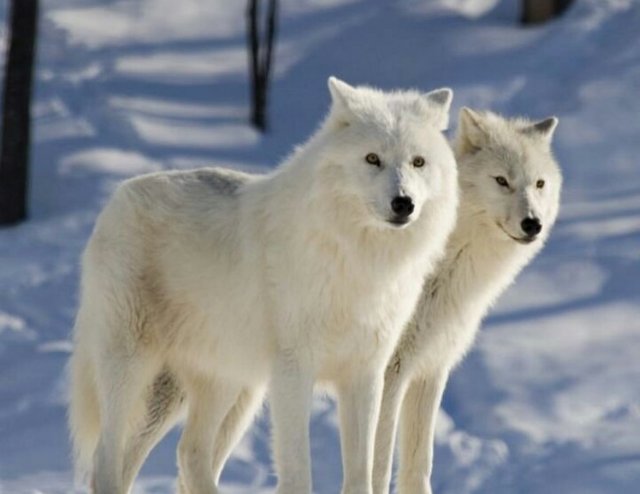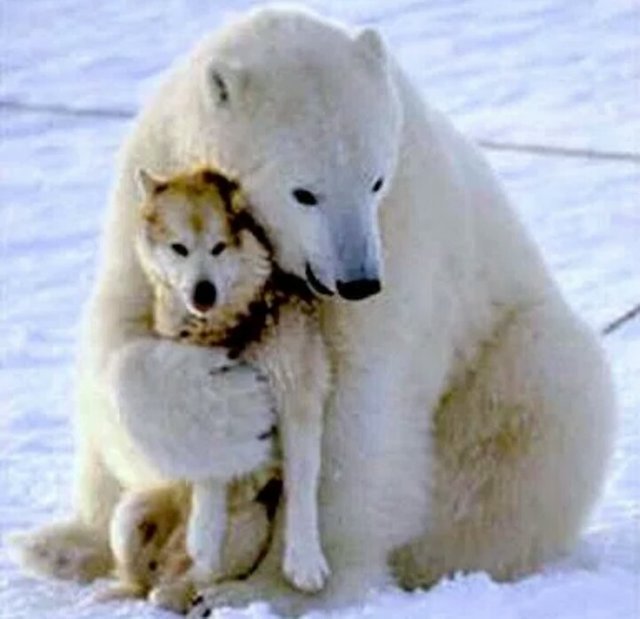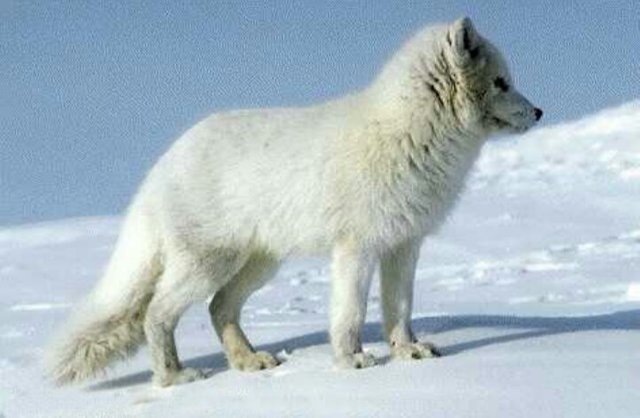Cold Fox Facts

Remaining at a little more than one foot tall, the Arctic fox might be a little warm blooded animal, however what it needs in survey it makes for in ingrained instincts! It is an amazingly solid creature, and has adjusted well to the Arctic tundra it calls home.
Where Do Arctic Foxes Live?
Ice foxes can be found in Alaska, Canada, Russia, Greenland and Iceland and other Arctic areas.
Ice Fox Facts: Do Arctic Foxes Hibernate?
Not at all like some different warm blooded creatures that live in icy atmospheres, the Arctic fox doesn't sleep in the winter. Cold foxes are dynamic consistently. Extraordinary climate conditions in a situation with restricted nourishment assets doesn't stop these strong little creatures!

Ice Fox Adaptations
The most striking ice fox adjustment is the way its jacket changes shading relying upon the season. This is its mid year coat.
With temperatures in the Arctic tundra averaging - 18°F in the winter and 37°F in the mid year, it's nothing unexpected that the Arctic fox has various adjustments to empower it to live and work in extremely chilly climate.
The ice fox has a thick, multi-layered fur garment that gives fantastic protection against the icy. Ice foxes even have hide on their paws so they can stroll on snow and ice without getting frosty! They utilize their thick tails to adjust as well as a safe house against the solidifying wind.
The Arctic fox's hide changes shading with the seasons, giving it year-round disguise. In the late spring its jacket is a dark colored dim shading. This conceals the creature against the rough ground. In the winter its jacket changes to a white shading for when the ground is shrouded in snow.
Under its hide, the ice fox has a ton of muscle versus fat, which keeps it protected wide open to the harshe elements. In the harvest time, ice foxes increment their fat stores to give vitality and protection through the winter.
The Arctic fox in its winter coat.
The ice fox's minimized, round shape and short legs and gag likewise anticipate warm misfortune.
Ice foxes have fantastic hearing, which proves to be useful when finding little creatures under the snow.
Ice Fox Facts: Family Life!
Ice foxes mate forever, and guardians remain together amid the reproducing season. The mother brings forth a litter of around 5 – 8 pups. The two guardians are engaged with taking care of their young.
Artic foxes live in tunnels. Grown-up Arctic foxes bring their pups up in these underground sanctums, which are regularly a system of passages covering a territory the extent of a football field!
What Do Arctic Foxes Eat?
Lemmings are an essential prey creature for Arctic foxes. Ice fox numbers rise and fall in connection to the span of the neighborhood lemming populace. Artic foxes eat an extensive variety of other little creatures, including arctic rabbits, winged animals (and fowl eggs), rodents, fish and seals.
The Arctic fox is an omnivore, which implies it eats plants too creatures. The Arctic fox will eat berries, ocean growth and different plants.
At the point when nourishment is rare, Arctic foxes show incredible creativity by following polar bears and eating pieces of sustenance deserted by the greater creatures!
Watch the video beneath to see cold foxes doing only this (notice: may not be reasonable for more youthful watchers!)
Cold Fox Predators
The Arctic fox's primary predator is the wolf, which will delve into Arctic fox lairs searching for pups. Ice foxes living in generally hotter parts of the Arctic tundra risk being gone after by the red fox – which is more qualified for living in hotter atmospheres than the Arctic fox.

At the point when nourishment is rare, polar bears may likewise go after Arctic foxes. Life can be extreme when you're not at the highest point of the evolved way of life!
Cold Fox Facts
Ice fox hide changes shading with the seasons so as to mix in with their surroundings.Arctic fox mothers and fathers for the most part mate forever, with both dealing with their pups.The normal life expectancy of an Arctic fox is 5 years – not terrible for living in the extraordinary cold!Arctic Foxes have hide on their paws to enable remain to warm while strolling on snow and ice!Arctic fox hide keeps them so warm that they won't start to shudder from frosty until the point when the temperature dips under - 90°F!They have a lot of muscle to fat ratio that protects their bodies in outrageous cold.They are the primary predator of feathered creature eggs in the Arctic tundra.There are countless Arctic foxes in North America, Europe and Asia!Arctic fox females convey the biggest number of pups than some other creature in the wild – upwards of 25!The Arctic fox is the main local land well evolved creature in Iceland!
On the off chance that you need to find out about some all the more astounding creatures, take a gander at our Arctic Animals list to begin.
Congratulations! This post has been upvoted from the communal account, @minnowsupport, by Robel12 from the Minnow Support Project. It's a witness project run by aggroed, ausbitbank, teamsteem, theprophet0, someguy123, neoxian, followbtcnews, and netuoso. The goal is to help Steemit grow by supporting Minnows. Please find us at the Peace, Abundance, and Liberty Network (PALnet) Discord Channel. It's a completely public and open space to all members of the Steemit community who voluntarily choose to be there.
If you would like to delegate to the Minnow Support Project you can do so by clicking on the following links: 50SP, 100SP, 250SP, 500SP, 1000SP, 5000SP.
Be sure to leave at least 50SP undelegated on your account.